Let’s say you are woking with a dataset where a column puts the records in a certain category. However, there are many variations of these group names present and you would like to unify them under one name. This is when Grouping in Tableau comes in to accomplish this task. In this blog, I will go through how to group members together in an efficient way when working with variations of a unifying name.
For the example, I am working with a dataset of multiple vehicles and their specifications. Under the “Series” column, the type of car is listed, such as: Hatchback, Coupe or Sedan. However, many variations of these names exist like the following:
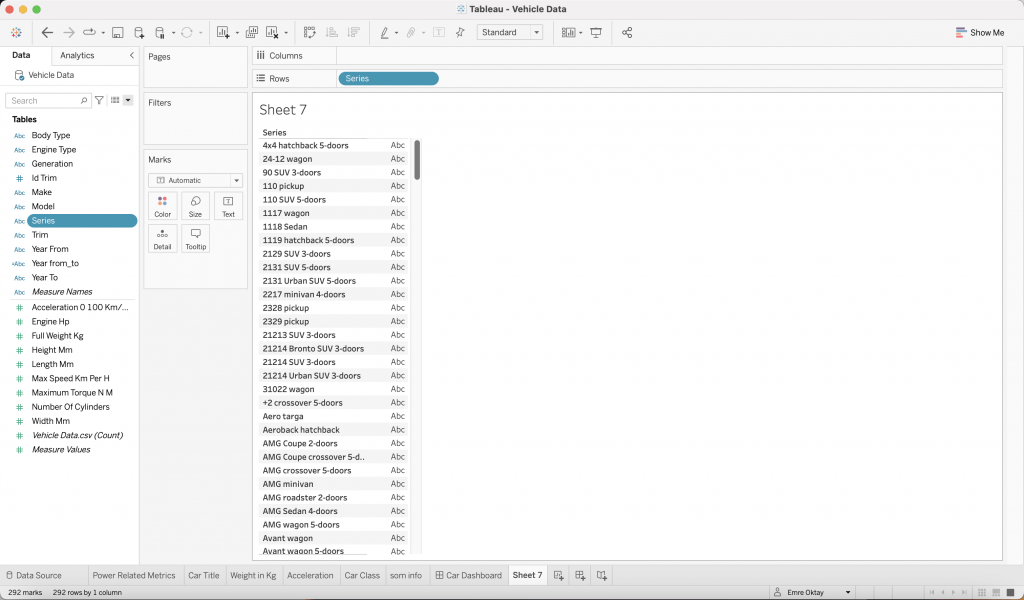
From this screenshot, I can already see that many unnecessary variations of the same category of cars exist. With a quick glance, I can already see common car types shared in these names. I want to group these variations together under that unifying name. For this, the most appropriate method for this is grouping.
To accomplish this, first I would create a group by right-clicking the field I would like to work with > Create > Group
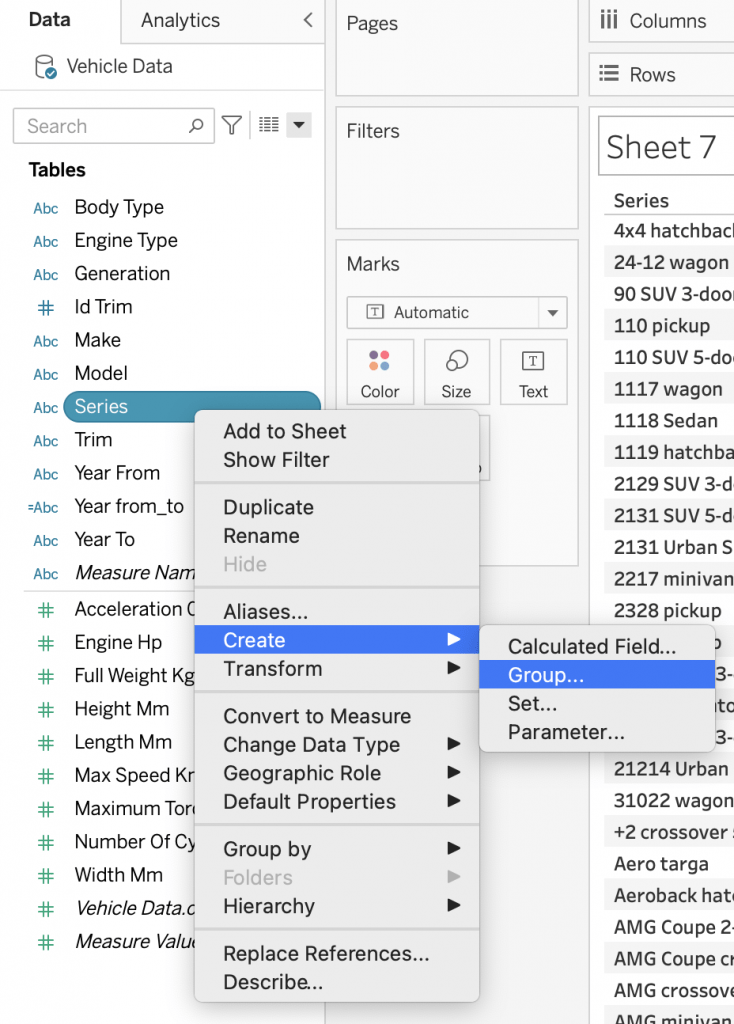
Once I click “Group…”, I am greeted with the configuration window for grouping:
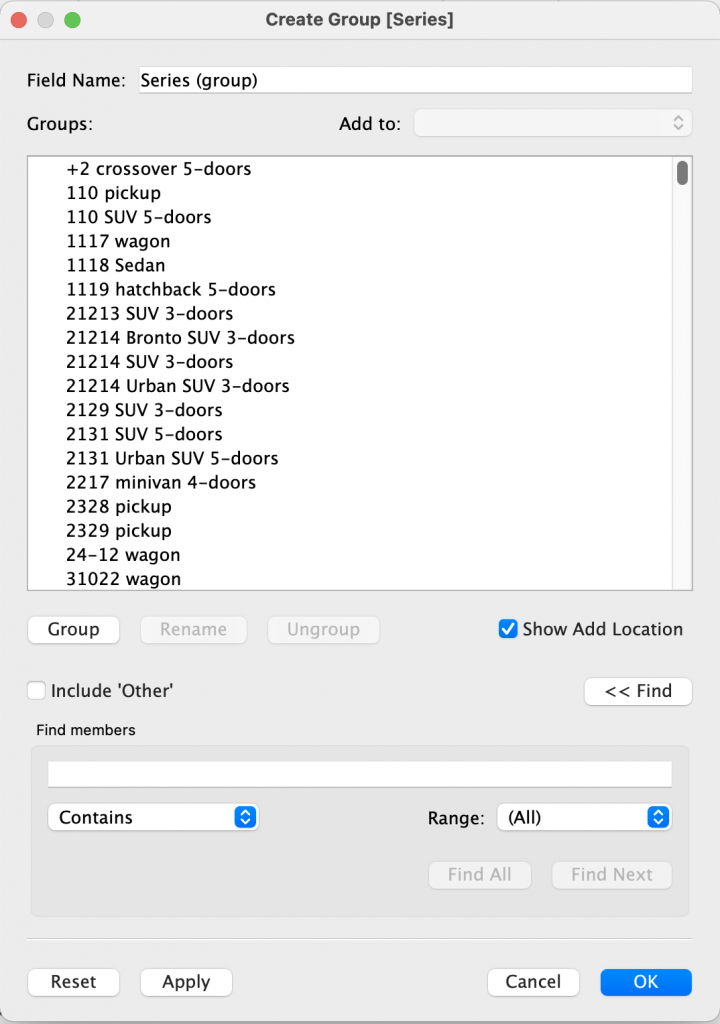
In the configuration window, the task is to select the unique names to group under a new name. Multiple groups can be created at once. For finding desired names easier, there is a “Find Members” window to help you find what you want faster. Once “OK” is pressed after creating your groups, a new field will be created. The name of the new field can be edited at the top of the window as well.
To speed up mu workflow, I will enter the names of main categories of cars in the “Find Members” section instead of going down the list one by one. For this example, I want to identify all members that contain the word “SUV”. After pressing “Find All” all fields with the name will be highlighted as so:
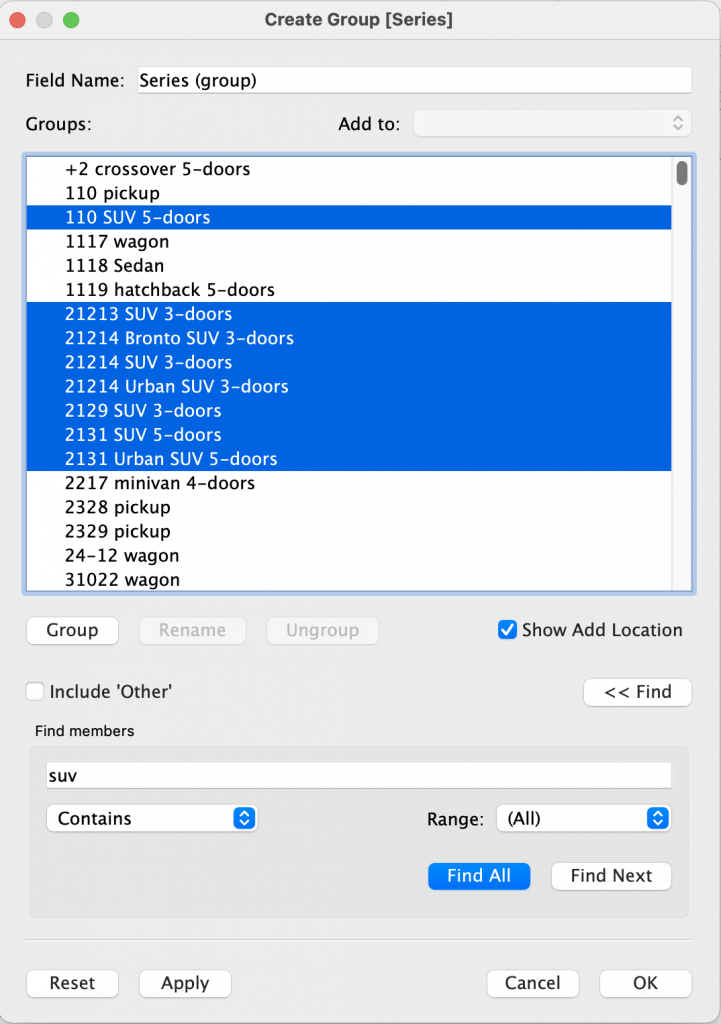
After pressing “Group”, all the selected members will be grouped. The newly created group can immediately be named as well. I named it “SUV”. Under this group, all members containing the word ‘suv’ is grouped. To reduce the number or unique members, I will continue grouping under common names for the other members. As the list gets smaller, it is easier to identify what you want to group. The newly created groups can be collapsed for having less members in your list and improve readability.
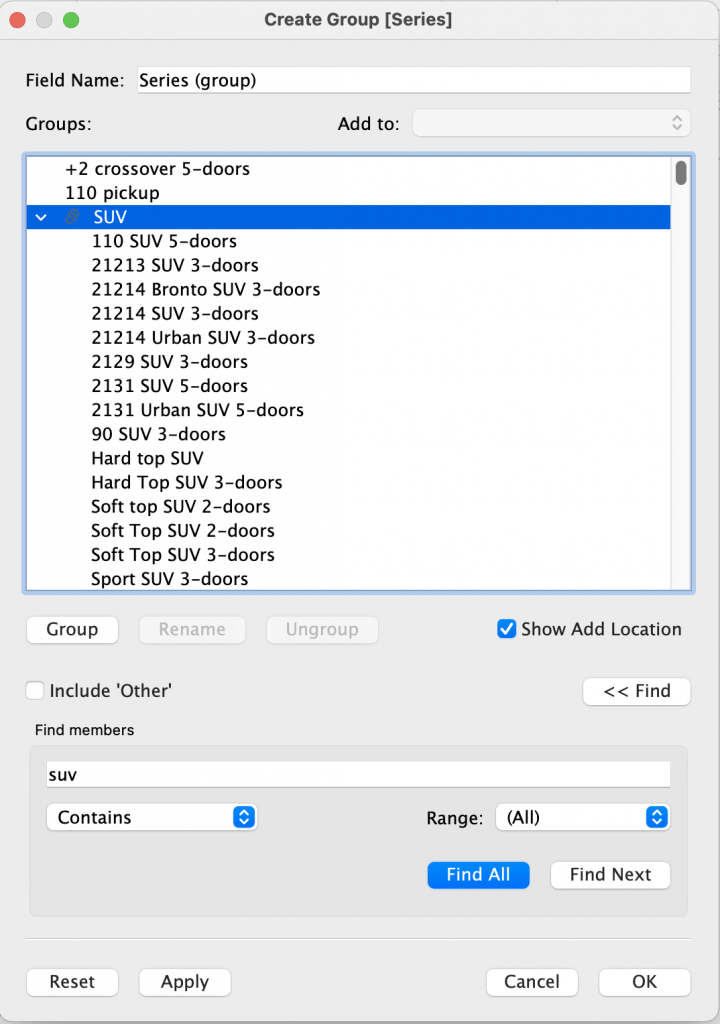
At the end, I went from having 292 messy unique car categories to having 17 cleaner car categories which will help me greatly for working efficiently in my analyses that will follow.
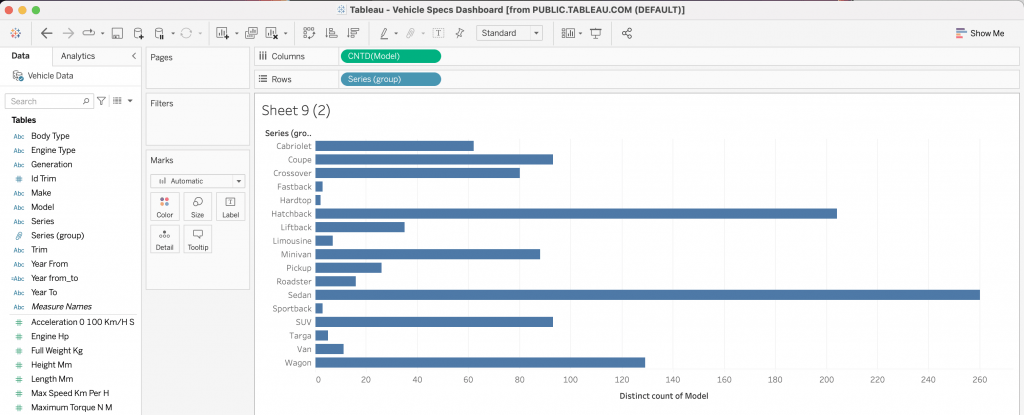
For more information on Grouping in Tableau, please visit this page for further explanation of grouping. Visit our site The Information Lab NL to see more blog posts, our training and consultancy services regarding Tableau, Alteryx and Snowflake.


